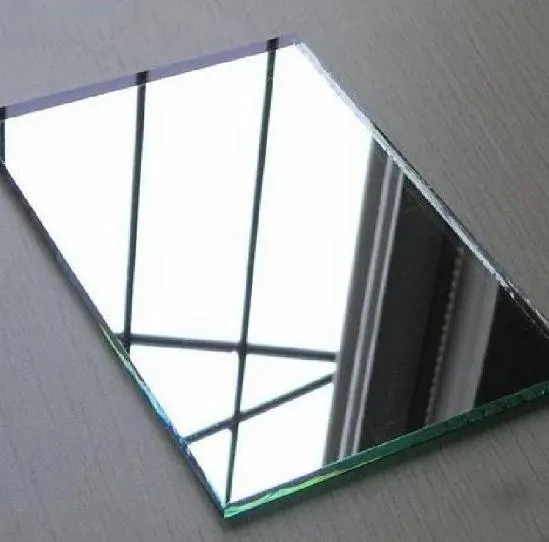Float mirrors, often hailed for their unrivaled clarity and remarkable versatility, are an essential component in various industries, from interior design to advanced scientific applications. This article delves into the nuanced world of float mirrors, offering an expert perspective grounded in experience and authoritative insights.

Float mirrors derive their name from the manufacturing process, known as the float glass process, innovated by Sir Alastair Pilkington in the 1950s. This pioneering technique involves floating molten glass on a bed of molten tin,
resulting in a perfectly flat and pristine glass sheet. Once cooled, the glass becomes the foundation for what we know as float mirrors, characterized by their exceptional smoothness and reflectivity.
The unparalleled quality of float mirrors makes them a staple in high-end architectural design. Their flawless surface allows for precise reflections without the common distortions found in non-float mirrors. This is particularly advantageous for interior designers seeking to create illusions of space and light, making rooms appear larger and brighter. Through meticulous placement, float mirrors enhance aesthetics while retaining functional benefits, such as increasing natural light and complementing layout designs.

Beyond aesthetics, float mirrors hold significant value in specialized fields requiring technical precision and reliability. In scientific research laboratories, for example, float mirrors are integral to optical systems and instruments. Their accuracy is crucial in experiments where even the slightest aberration could compromise results. The seamless surface of float mirrors ensures that reflections remain true to the source, maintaining the integrity of optical paths in laser technology and spectroscopy.
float mirror
On the topic of sustainability, float mirrors are a testament to eco-conscious innovation. The float glass process is optimized for minimal environmental impact, with impressive energy efficiency and reduced carbon footprint compared to conventional methods. Furthermore, float mirrors are recyclable, aligning with global sustainability goals and supporting environmentally responsible design.
Trustworthiness and quality assurance in float mirrors are paramount. Reputable manufacturers adhere to stringent quality standards, testing each batch for uniform thickness, clarity, and the absence of impurities. This rigorous quality control ensures that end-users receive products that not only meet but often exceed industry expectations. When selecting float mirrors, stakeholders should prioritize manufacturers with proven track records and certifications that validate their operational excellence.
While the qualities of float mirrors are compelling, their successful implementation hinges on informed choices regarding appropriate applications and configurations. Designers and engineers often collaborate with glass specialists to tailor mirror solutions that align with specific project needs. Factors such as size, coating options, and installation requirements must be carefully considered to harness the full potential of float mirrors.
In conclusion, float mirrors epitomize the intersection of artistry and precision, serving both aesthetic and practical roles across numerous domains. Their unique qualities, borne from expert engineering and sustainable practices, are integral to their enduring appeal and utility. By understanding and leveraging the inherent advantages of float mirrors, consumers and professionals alike can achieve remarkable results, reinforcing trust and satisfaction in this time-honored glass technology.



